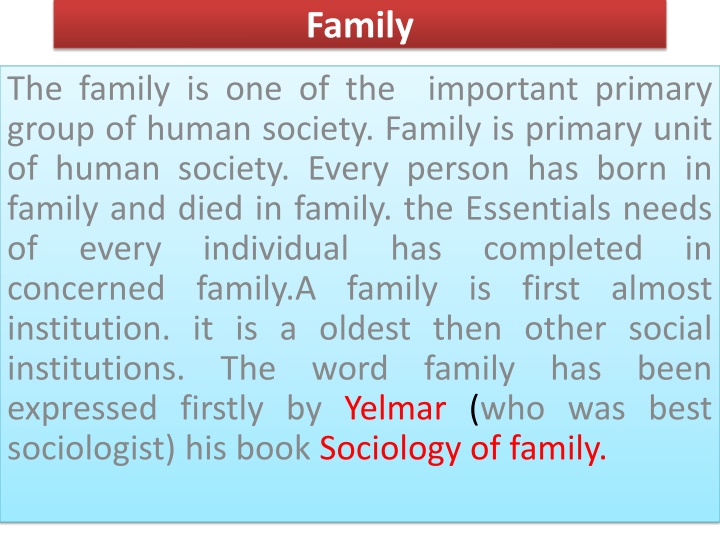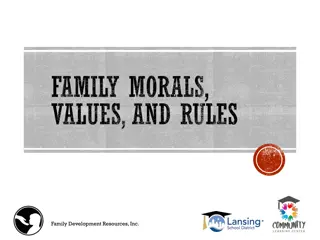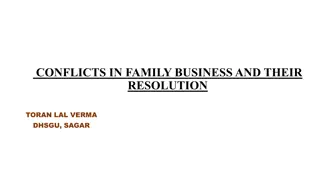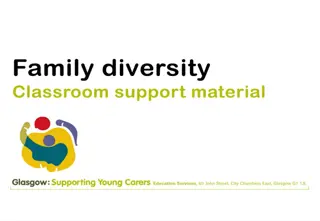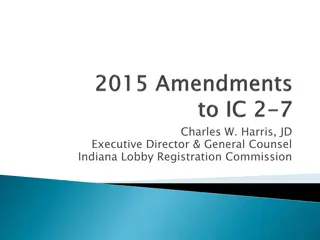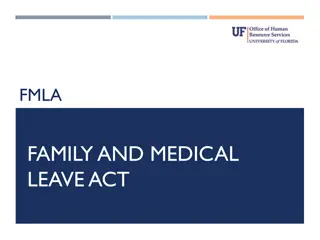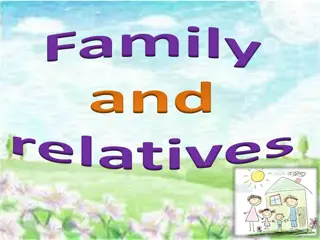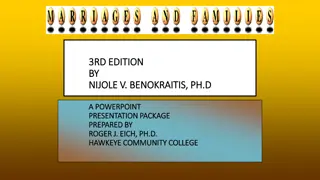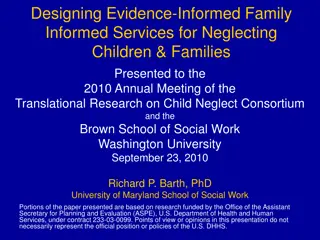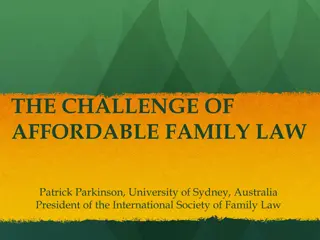Family
Family is a fundamental unit of human society, existing in all periods of history. It consists of individuals related by marriage and blood ties, providing emotional support, care, and influence. Various definitions and characteristics of family highlight its universality, emotional basis, limited size, formative influence, and nuclear position within social structures.
Download Presentation

Please find below an Image/Link to download the presentation.
The content on the website is provided AS IS for your information and personal use only. It may not be sold, licensed, or shared on other websites without obtaining consent from the author.If you encounter any issues during the download, it is possible that the publisher has removed the file from their server.
You are allowed to download the files provided on this website for personal or commercial use, subject to the condition that they are used lawfully. All files are the property of their respective owners.
The content on the website is provided AS IS for your information and personal use only. It may not be sold, licensed, or shared on other websites without obtaining consent from the author.
E N D
Presentation Transcript
Family The family is one of the important primary group of human society. Family is primary unit of human society. Every person has born in family and died in family. the Essentials needs of every individual concerned family.A family is first almost institution. it is a oldest then other social institutions. The word expressed firstly by Yelmar (who was best sociologist) his book Sociology of family. has completed in family has been
Meaning of family Family is a basic social institution existing in all periods of history. Family simply means a social group consisting of husband, wife and their children. The term family derived from Latin word famulus meaning servant. Family is a group of persons defined by sexual relations, and the people in it are related through the ties of marriage and blood. Family is a social as well as a biological unit.
Definitions of family MacIver: family is a group defined by sex relationship sufficiently precise and enduring to provide for the procreation and upbringing of children. K.Davis- family is a group of persons whose relations to one another are based upon consanguinity and who are therefore kins to one another. Elite and Mirill- family is a biological social unit composed of husband wife and their children.
Definitions of family Clare-Family is a system of relationship existing between parents and children. Biesanz-The family maybe described as a woman with the child and man to look after them. Nimcoff family is a more or less durable association of husband and wife with or without children, or of a man or women alone with children.
Characteristics of Family 1. Universality: Family is a universal institution in society. Family has existed in every age and in every society and is found in all parts of the world. No culture or society has never existed without some form of family organization. 2. Emotional basis: Family is a fundamental unit of human society. It is based on certain emotions like care, love, sharing, recognition etc.
Characteristics of Family 3. Limited size: Family is a group constituted by a limited number of people. It is a group based on biological condition. 4. Formative influence: Family helps to form certain qualities like personality, socialization etc. The family exercises the most profound influence over its members. It moulds character of individuals. Family influences individual from childhood on wards. 5. Nuclear position: The family is the nucleus of all other social groups.Marriage, parental obligations, siblings and secondary included in family.The whole social structure is built of family units. institutions etc are
Characteristics of Family 6. Responsibility of the members: Family is not merely a temporary collection of people, it is a functional group. Family is group constituted on the basis of marriage. Parents and children have certain mutual responsibilities. Each and every member has responsibilities for the maintenance of family as a primary institution. 7. Social regulation: Social regulation means the control of society over individuals for regulating behavior. Family is guarded by social customs and legal regulations. It imposes certain regulations over members to control the behavior of individuals. 8. Permanent and temporary: Family as an institution is permanent and universal, while as an association it is temporary and transitional
Functions of Family Functions of family different sociologist have classified the functions of family differently. Family is a small social unit composed by husband wife and their children's. Family has certain characteristics like universality, nuclear position, social regulation, emotional basis; limited size etc. sociologists opined that functions to maintain society. As following . family has certain
Functions of Family according to sociologist Ogburn and nimkoff: Divided them into 6 categories. such as... 1. Affectionl functions. 2. Economic functions. 3. Race continuity functions. 4. Religious functions. 5. Educational functions. 6. Recreational functions.
Functions of Family according to sociologist Reed has given the functions of the family as.. 1.Race perception 2.Socialization 3.Regulation and satisfaction of sex 4.Economic function
Functions of Family according to sociologist MacIver and page: divided the function of the family into two broad categories like, Essential and non essential functions. A) Essential functions. 1. Stable satisfaction of sex 2. Production and maintenance of children 3. Provisions of home minimum basic facilities 4. Giving love and sympathy 5. Socialization 6. Protection of old age
B) Non essential functions. Economic functions . Religious functions Educative functions. Social functions. Cultural functions. Recreational functions.
